Below are roping saddles for ranch and arena for sale. The saddles are both new and used, and there is a large selection to shop from.
Underneath the saddles for sale you can find information about roping saddle riggings and saddle trees
Below: A trophy team roping saddle.
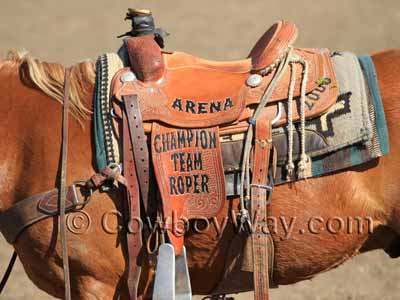
Comparison Shop Roping Saddles
Below are roping saddles for sale from different major online sellers. This page lets you compare prices and selection against major online sellers.
From eBay and HorseSaddleShop
See more roping saddles on HorseSaddleShop
See more USED roping saddles on HorseSaddleShop
See more roping saddles on eBay
What Is A Roping Saddle?
The term “roping saddle” refers to a Western type of saddle specially built for roping cattle. Most roping saddles are either “full-rigged,” “7/8 rigged,” or “3/4 rigged.” This means that the front cinch is farther forward toward the front of the saddle than an older style of rigging called “center fire.” Full-rigged, 7/8 rigged, and 3/4 rigged saddles are designed to handle the force and stress of roping, both on the saddle and on the horse.
Below: An illustrated photo showing approximate locations of saddle rigging positions.
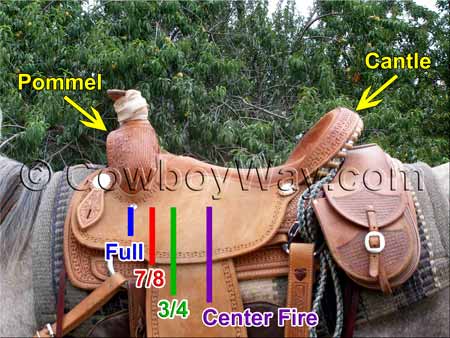
Since the front cinch on a roping saddle is fairly far forward, a roping saddle will often also have a a second cinch, called a “back cinch” toward the back of the saddle (some folks call it a “flank cinch”). A back cinch prevents the back of the saddle from rising up when roping or riding in rough country. A saddle with a front and back cinch is often called a “double-rigged” saddle.
Below: A roper ropes a cow in the wild cow milking at a ranch rodeo.
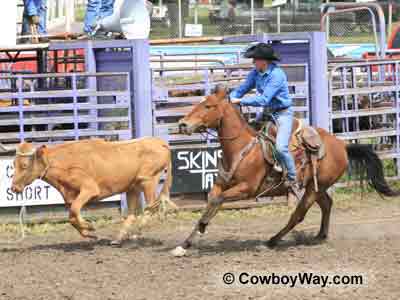
Below: A close-up of the saddle pictured above. The blue line is illustrating that the front cinch is close to the front of the saddle, as opposed to being farther back closer to the center of the saddle.
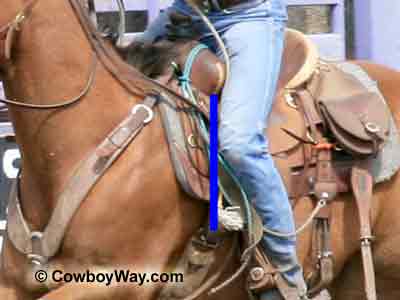
For comparison to the rigging in the photo above, below is a photo of a center fire rigged saddle on display at the Don King Museum, a wonderful museum inside of King’s Saddlery in Sheridan, Wyoming. As you can see, it has a center fire rigging.
Below: A saddle with a center fire rigging.
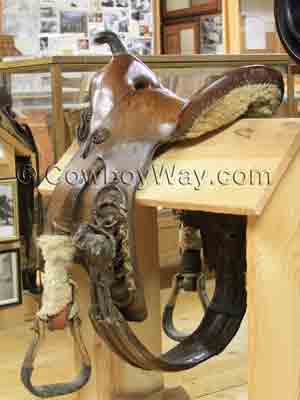
Industry Standards, Riggings, and Roping Saddles
When shopping for a roping saddle it can sometimes be helpful to know that saddle rigging positions vary from one saddle maker to another. In other words, one saddle maker’s “full” rigging position (or any of the other positions) might not be in the exact same place as another saddle maker’s. Since there isn’t an industry wide standard for rigging positions each saddle maker sets their own standards.
Below: A team roping saddle at Cheyenne Frontier Days. You can see the power the horse is using to turn the steer.
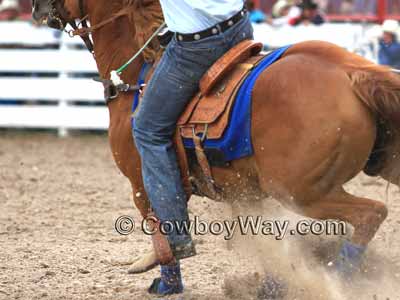
Below: A calf roping saddle. You can see it has a front and back cinch.
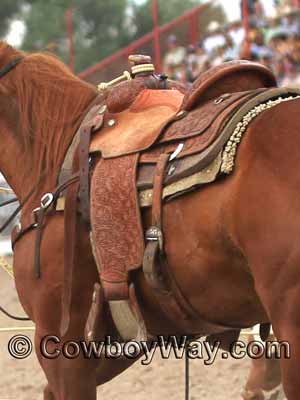
Roping Saddle Trees
The tree of a roping saddle is usually heavier and sturdier than trees in other types of saddles. In the past, roping saddles mainly had trees made of wood covered with bullhide or rawhide. While this type of tree is still generally considered to be the most durable for roping, they are almost always the heaviest type of trees.
Even though roping saddles are often heavy when compared to other saddles, there are lightweight roping saddles.
In recent years lighter weight trees have become more popular in roping saddles, such as wood covered with fiberglass, “Ralide” trees (Ralide is an extremely strong form of plastic), or Equi-Fit trees (sometimes also called a “Steele Equi-Fit” for its designer, Ed Steele).
Below: A bare saddle tree for a ranch/roping saddle.
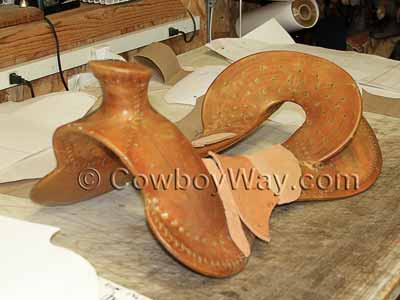
You might also like: